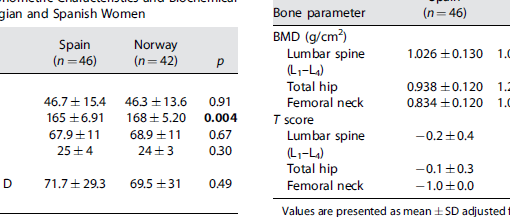Abstract
OBJECTIVE:
To compare results obtained with a handheld reference point indentation instrument for bone material strength index (BMSi) measurements in the equine third metacarpal bone for various testing conditions.
SAMPLE:
24 third metacarpal bones.
PROCEDURES:
Third metacarpal bones from both forelimbs of 12 horses were obtained. The dorsal surface of each bone was divided into 6 testing regions. In vivo and ex vivo measurements of BMSi were obtained through the skin and on exposed bone, respectively, to determine effects of each testing condition. Difference plots were used to assess agreement between BMSi obtained for various conditions. Linear regression analysis was used to assess effects of age, sex, and body weight on BMSi. A mixed-model ANOVA was used to assess effects of age, sex, limb, bone region, and testing condition on BMSi values.
RESULTS:
Indentation measurements were performed on standing sedated and recumbent anesthetized horses and on cadaveric bone. Regional differences in BMSi values were detected in adult horses. A significant linear relationship (r(2) = 0.71) was found between body weight and BMSi values. There was no difference between in vivo and ex vivo BMSi values. A small constant bias was detected between BMSi obtained through the skin, compared with values obtained directly on bone.
CONCLUSIONS AND CLINICAL RELEVANCE:
Reference point indentation can be used for in vivo assessment of the resistance of bone tissue to microfracture in horses. Testing through the skin should account for a small constant bias, compared with results for testing directly on exposed bone.
https://www.ncbi.nlm.nih.gov/pubmed/26709935
Am J Vet Res. 2016 Jan;77(1):39-49. doi: 10.2460/ajvr.77.1.39.



